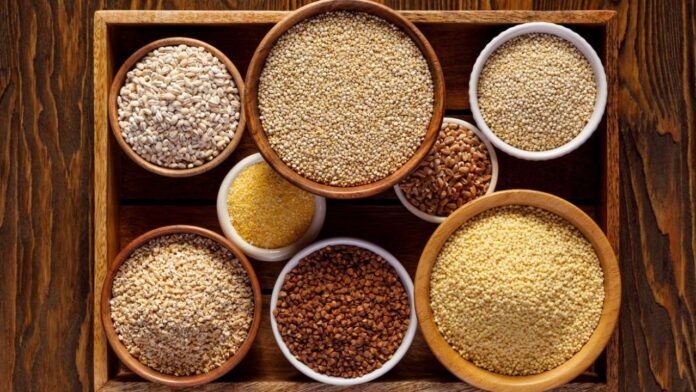Millets are a fantastic dietary option for individuals with diabetes. They help regulate blood sugar levels and enhance insulin sensitivity, offering numerous health benefits. Once forgotten, these superfoods have resurged in popularity among fitness enthusiasts. Millets boast an impressive nutritional profile, being rich in fiber and packed with micronutrients. They are particularly advantageous for diabetics who need to incorporate low-GI foods into their meals. The high fiber content not only helps you feel fuller for longer, reducing cravings for unhealthy snacks, but also supports a healthy digestive system.
Examples of millets include sorghum (jowar), proso millet (chena/barri), pearl millet (bajra), foxtail millet (kakum/kangni), finger millet (ragi), browntop millet (korle), barnyard millet (sanwa), and little millet (moraiyo).
Here are some delicious ways to include millets in your diet:
- Millet Upma: Substitute semolina with foxtail or barnyard millet, add vegetables, and season with spices for a nutritious and low-GI breakfast.
- Millet Khichadi: Combine millets (like pearl or little millet) with lentils, spices, and vegetables for an easy-to-digest dinner that helps stabilize blood sugar.
- Millet Dosa and Idli: Use finger millet instead of rice for a probiotic-rich, fiber-dense meal that’s light and easy to digest, helping to maintain sugar levels.
- Millet Salad: Make a fresh salad with cooked millets (like Kodo millet), chopped vegetables, herbs, and a light dressing for a low-calorie, high-fiber lunch.
- Millet Stir-fry: Mix cooked millets (like barnyard millet) with stir-fried vegetables, tofu, or lean meats, and season with ginger-garlic and soy sauce for a tangy, balanced meal.
- Millet Porridge: Start your day with millet porridge made from any millet (like foxtail millet), cooked with water or milk, and flavored with cinnamon and nuts for a wholesome meal that maintains blood sugar levels throughout the morning.

 हिंदी
हिंदी






